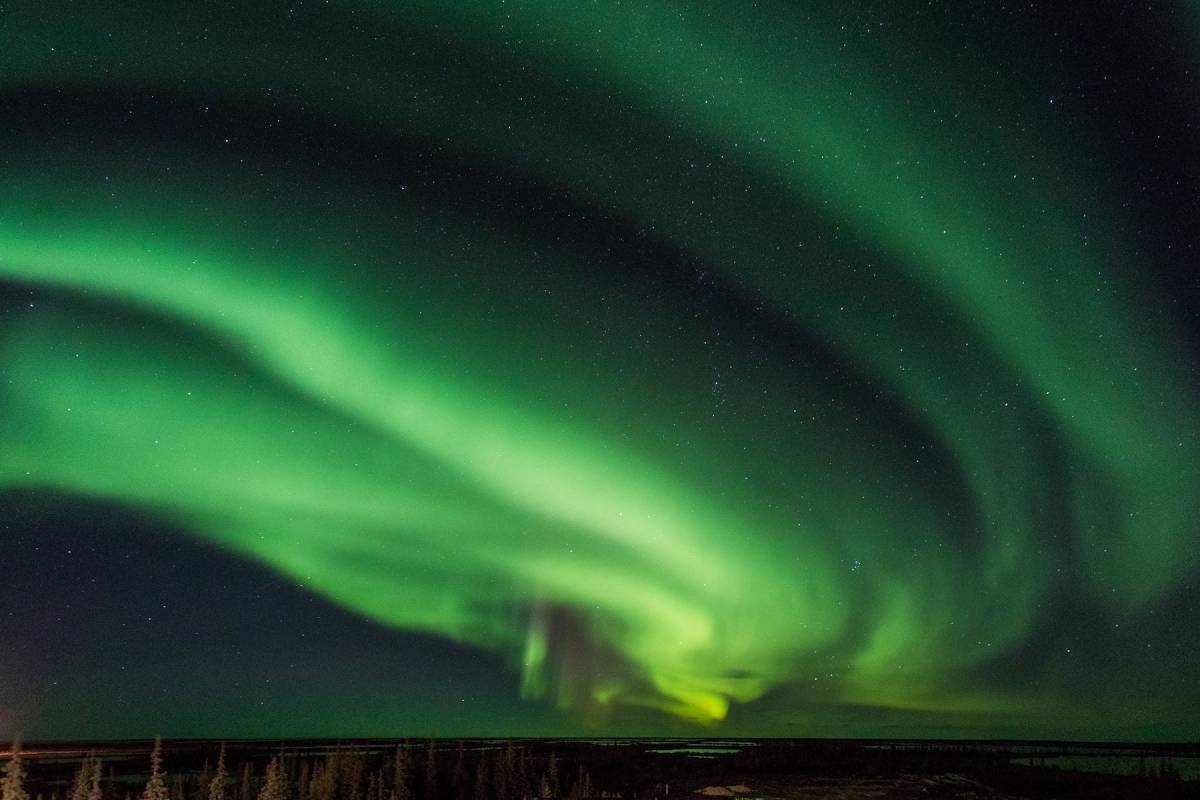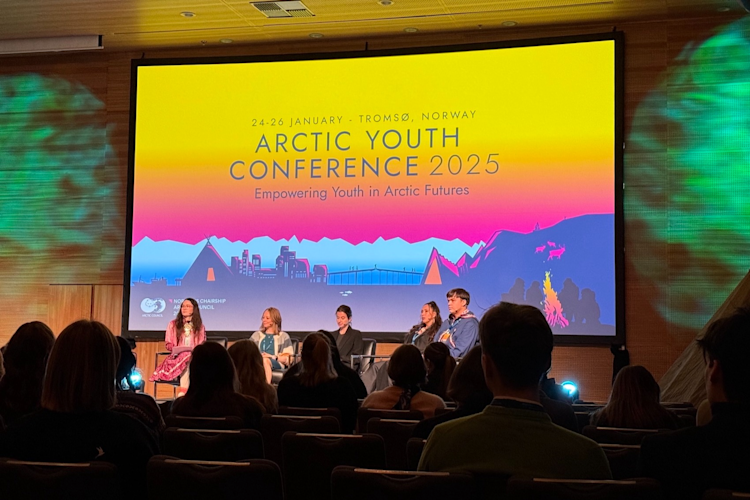I am on hand to answer questions and to guide visitors through the educational exhibits on the polar bears’ ecology and the threats facing the sea-ice ecosystem that polar bears rely on. The first question from visitors is often, “Where are the bears?” This is understandable, since Churchill is often described as the polar bear capital of the world. In the fall, polar bears gather on the shores of Hudson Bay, providing a rare chance to see them on land as they wait for the bay to freeze over, forming the sea-ice platform where they hunt and roam. By winter, though, most of Western Hudson Bay’s polar bears are already out on the sea ice, hunting seals and fattening up before the ice melts and disappears in the warmer summer months.
I particularly enjoy talking through the polar bears’ impressive reproductive cycle, explaining that the only polar bears still on land around this time of year are females that gave birth to new cubs a few months ago in dens. Despite weighing a paltry 600 grams at birth, come March, these cubs are large and furry enough to leave the den and journey to the sea ice with mum. There is something incredibly striking in watching the snow being whipped up by the wind outside and imagining a newly born cub snuggled inside a den, protected from the harsh cold and yet to experience the world outside.
The days take on their own rhythm during my stay. A bracing walk across town to catch the morning light, coffee, and then some time for working on my research projects. With many visitors to Churchill out viewing the aurora until late into the night, the Polar Bears International House opens to the public in the afternoons. Beyond its educational function, the house also provides a gathering space for the Churchill community. One of the highlights of my stay was the opportunity to give a talk on my research as part of the community presentation series at Polar Bears International House (also live-streamed and recorded on Facebook). There is nothing better than an evening spent chatting polar bears over a warm drink and freshly baked cookies!
Thinking back on my time in Churchill, I found the experience of chatting, answering questions, and sharing discussions about the future of polar bears to be incredibly rewarding, often leading to a sense of shared connection about our role in the world and what we can do to ensure a future for Arctic ecosystems and for ourselves. Although the threats to polar bears are stark, and the risks from climate warming are severe, these conversations were uplifting—people’s interest in learning about solutions, and their openness to tackle these challenges right now left me feeling inspired at the end of each day.
A stroll down to the shoreline at the back of town, seeing the expansive sea ice stretching out—almost purple in the fading light—instilled further hope and motivation to make sure this remarkable ecosystem can continue to provide a home for polar bears into the future.
















